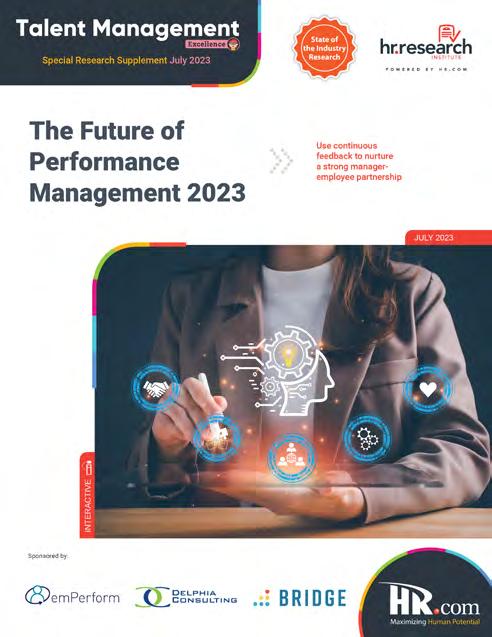



JULY 2023 • Vol. 10 • No.07 (ISSN 2564-1972) The Future of Performance Management 2023 Page 25 - 44 Sponsored by 6 STRATEGIES FOR TYING PERFORMANCE MANAGEMENT TO EMPLOYEE DEVELOPMENT AND CAREER ADVANCEMENT
- Brett Farmiloe, Founder and CEO, Featured

07 INDEX On the Cover Articles Talent Management Excellence JULY 2023 Vol.10 No.07 6 Strategies For Tying Performance Management To Employee Development And Career Advancement - Brett Farmiloe, Founder and CEO, Featured 48 Bending The Age Curve: Creating Age-Friendly Organizations That Work For Women Best practices to create an inclusive environment - Kate Milne, Founder and Principal Health Promotion Consultant, Cardea Health Consulting 56 Exploring The Impact Of AI On Human Resource Practices How AI can help and hurt HR - Roza Szafranek, CEO and Founder, HR Hints 63 The Mid-Year Fatigue: Navigating The Exhaustion Of The “Now” Age 5 reminders and tips to restore your energy - Anja van Beek, Talent Strategist, Mentor and Leadership Consultant, Anja van Beek Consulting & Coaching (ISSN 2564-1972) 16 New Research Debunks Common Myths About Remote Work And Productivity Remote work’s positive impact on productivity, trust, and employee satisfaction - Daan van Rossum, CEO, FlexOS The Future of Performance Management 2023 Page 25 - 44
Top Picks 12
Building Layoff Resilience: Unleashing
The Power Of Proactive Performance Management
From crisis response to strategic advantage
- Melissa Phillippi, Vice President, Organizational Development and Talent Management, Vaco
45
4 Things Your Corporate Relocation Policy May Be Missing
The leading factors and trends influencing employee relocations
- Kelly Cruse, Vice President, Human Resources and Chief Diversity Officer, Atlas® World Group
51
Harnessing Personality Profiles for Talent Pairing and Team Building

A comprehensive approach to talent management
- Gerlie Corachea, Director, Talent Pairing, Cyberbacker
59
5 False Stereotypes About Gen Z That Every Employer Should Know

Stay one step ahead in creating the next generation’s motivational workplace culture
- Rebecca Ahmed, Chief Energy Officer, and Founder, Energetic Impact
INDEX
How are our Talent Management Products and Services helping to make you smarter?

Talent Management Excellence - Monthly Interactive Learning Journal
This monthly interactive learning experience captures key metrics and actionable items and keeps you focused on your Talent Management Needs.
Talent Management Virtual Events

Talent Management Virtual Events will help individuals who deal with the different areas in talent management get a better understanding of the big picture of their organization. Manage performance and talent effectively by studying topics from compensation and incentives, technologies, and compliance to managing and tracking performance of an organization, a department, employee, or even the processes to build a product or service. Each Virtual Event consists of up to 10 credit webcasts.
Talent Management Webcasts for Credit
HR.com webcasts deliver the latest Talent Management industry news, research trends, best practices and case studies directly to your desktop. Webcasts are available live online with a downloadable podcast and a copy of the slides (PDF) available before and after each webcast. Earn all of the required recertification credits for aPHR, PHR, SPHR, GPHR, and SHRM Certifications. HR.com’s one-hour webcasts, in every HR specialty including Talent Management, are pre-approved for HRCI and SHRM credit (excluding Demo webcasts).
Talent Management Community
Join almost 120,000 HR.com members with a similar interest and focus in the Talent Management Community. Share content and download research reports, blogs, and articles, network, and “follow” peers and have them “follow” you in a social network platform to communicate regularly and stay on top of the latest updates. This well established Talent Management Community is an invaluable resource for any HR professional or manager.
Use these invaluable Talent Management resources today! For more information phone: 1.877.472.6648 | email: sales@hr.com | www.hr.com
Editorial Purpose
Our mission is to promote personal and professional development based on constructive values, sound ethics, and timeless principles.
Excellence Publications
Debbie McGrath CEO, HR.com - Publisher
Sue Kelley Director (Product, Marketing, and Research)
Babitha Balakrishnan and Deepa Damodaran Excellence Publications Managers and Editors
Talent Management Excellence (ISSN 2564-1972)
Babitha Balakrishnan Editor
Arun Kumar R Design and Layout (Digital Magazine)
Chandra Shekar A K Magazine (Online Version)
Submissions & Correspondence
Please send any correspondence, articles, letters to the editor, and requests to reprint, republish, or excerpt articles to ePubEditors@hr.com
For customer service, or information on products and services, call 1-877-472-6648 Talent
Debbie Mcgrath Publisher, HR.com
Babitha Balakrishnan Editor, Talent Management Excellence

Performance Management Trends: Navigating the Future of Employee Development and Remote Work
Asbusinesses evolve in response to dynamic market forces and technological advancements, the landscape of performance management has undergone significant transformations. The future holds promises of even more profound changes in how performance management is approached and executed.
Today, organizations have recognized the need to foster a culture of ongoing feedback, employee development, and goal alignment. With the rise of remote work and virtual teams, new challenges and opportunities have emerged, compelling businesses to adapt their performance evaluation methods to accommodate a more dispersed workforce.
As we step into the future, the trends shaping performance management are likely to be fueled by cutting-edge technologies and data analytics. Artificial intelligence (AI) and machine learning will play an increasingly central role in gathering and analyzing performance data, providing valuable insights to enhance decision-making and talent development. Additionally, the integration of wearable devices and smart tools will enable real-time monitoring of employee performance, ushering in a new era of data-driven performance management.
The July edition of Talent Management Excellence includes informative articles that focus on performance management trends, employee productivity, age-friendly organizations, and much more.
Brett Farmiloe's (Founder and CEO, Featured) article, Strategies For Tying Performance Management To Employee Development And Career Advancement, explores the vital connection between performance management, employee development, and career advancement by gathering insights from six HR professionals and leaders.
Melissa Phillippi’s (President of Organizational Development and Talent Management, Vaco) article,

Building Layoff Resilience: Unleashing The Power Of Proactive Performance Management highlights the significance of proactive performance management as a powerful tool in strengthening organizational health, building resilience, and defining culture amidst economic uncertainty.
Also included is an exclusive HR Research Institute study, The Future of Performance Management 2023 that focuses on the challenges organizations face in meeting performance management goals, inadequate training for managers, the future of performance management and much more.
A survey on hybrid and remote work managers reveals that remote work has positively impacted productivity and trust in teams, contradicting the myth of unproductive remote workers. For more insights on this topic, read Daan van Rossum's (CEO at FlexOS) article, New Research Debunks Common Myths About Remote Work And Productivity.
In brief, with the increasing focus on employee development, remote work, and cutting-edge technologies, the future of performance management holds great promise. As organizations navigate the challenges and opportunities presented by evolving work dynamics, proactive performance management emerges as a powerful tool to enhance organizational health, productivity, and employee satisfaction.
We hope you find the articles in this issue informative and helpful and, as always, we welcome your valuable feedback and suggestions.
Happy Reading!
The views, information, or opinions expressed in the Excellence ePublications are solely those of the authors and do not necessarily represent those of HR.com and its employees. Under no circumstances shall HR.com or its partners or affiliates be responsible or liable for any indirect or incidental damages arising out of these opinions and content.
Disclaimer:
EDITOR’S NOTE
Subscribe now for $99 / year And get this magazine delivered to your inbox every month Become a Member Today to get it FREE! SIGN UP OR For Advertising Opportunities, email: sales@hr.com Copyright © 2023 HR.com. No part of this publication may be reproduced or transmitted in any form without written permission from the publisher. Quotations must be credited.
Management Excellence is published
Write to the Editor at ePubEditors@hr.com
monthly by HR.com Limited, 56 Malone Road, Jacksons Point, Ontario L0E 1L0 Internet Address: www.hr.com
In a world of unparalleled challenges (global pandemic, racial injustice, political rivalry, digital 4.0, emotional malaise), uncertainty reigns. Finding opportunity in this context requires harnessing uncertainty and harnessing starts with reliable, valid, timely, and useful information. The Excellence publications are a superb source of such information. The authors provide insights with impact that will guide thought and action.
Dave Ulrich
Rensis Likert Professor, Ross School of Business, University of Michigan Partner, The RBL Group



Excellence publications are my ‘go-to’ resource for contemporary and actionable information to improve leadership, engagement, results, and retention. Each edition offers rich and diverse perspectives for improving the employee experience and the workplace in general.

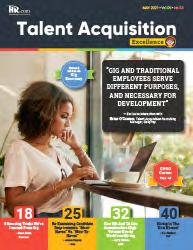




I regularly read and contribute to Leadership Excellence and Talent Management Excellence. I use many of the articles I read to augment my own presentations and I often share the articles with my clients. They are always quick, right on target for the latest issues in my field, and appreciated by my clients. If you want to stay up to date on the latest HR trends, choose a few of the different issues from the Excellence series of publications.
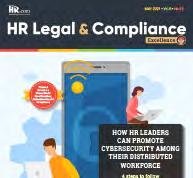

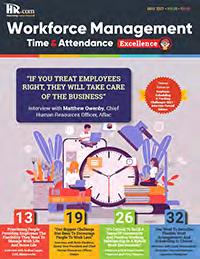


We’re eager to hear your feedback on our magazines. Let us know your thoughts at ePubEditors@hr.com


Talent Management Excellence presented by HR.com JULY 2023 6 Submit Your Articles
WHY EXCELLENCE PUBLICATIONS?
Julie Winkle Giulioni Author, Virtual /Live Keynote Presenter, Inc.’s Top 100 Leadership Speakers
Dr. Beverly Kaye CEO, BevKaye&Co.
6 Strategies For Tying Performance Management To Employee Development And Career Advancement
By Brett Farmiloe, Featured
To understand the connection between performance management, employee development, and career advancement, we gathered insights from six human resources (HR) professionals and leaders. From linking development to performance rewards to aligning goals and growth opportunities, discover how these experts have successfully impacted retention and job satisfaction in their organizations.
● Linking Development to Performance Rewards
● Integrating Career Goals in Reviews
● Hosting Feedback Sessions and Talent Identification
● Refined Coaching for Performance Growth
● Robust System for Employee Development
● Aligning Goals and Growth Opportunities
Talent Management Excellence presented by HR.com JULY 2023 7 Submit Your Articles
Experts share how they successfully impacted retention and job satisfaction in their organizations
COVER
STORY
Linking Development to Performance Rewards
Paying for performance is good. Paying for value is even better. When you make professional development a strength that directly affects both annual performance rewards and longer-term promotion and succession planning decisions, you create a culture of purposeful development.
This transparent, process-based approach to linking performance and development provides employees with tangible reasons for taking action. Encouraging them to enhance their ability to add value drives engagement, sparks productivity, and increases retention. Worst case, if an employee leaves after growing at your company, they become a net promoter.
Integrating Career Goals in Reviews


Increasingly, whether employees have access to career and skill development opportunities in their role or at their organization is a key predictor of employee engagement and turnover. For career development, bringing this element into performance management processes can be as simple as changing the template you use for quarterly and annual reviews so that it prompts managers and direct reports to reflect on what their larger career goals are, either within or beyond the company, as well as how and whether the skills they are using in their current role can help get them there.
Often, understanding an employee’s larger goals can help managers to better identify projects that will keep them better engaged and encourage them to contribute actively to the company. From a diversity and inclusion perspective, asking direct reports to share their career goals can also help to mitigate the bias that often crops up in who gets designated as a “top performer.”
Talent Management Excellence presented by HR.com JULY 2023 8 Submit Your Articles 6 Strategies For Tying Performance Management To Employee Development And Career Advancement
Tim Toterhi, CHRO, Plotline Leadership
Genevieve McGahey, Senior DEIB Consultant, Peoplism
Feedback Sessions and Talent Identification
Organizations should focus on employee performance as a continuous development activity, ensuring outcomes for the benefit of the organization and employee growth in terms of career advancement by implementing periodical performance review mechanisms to extend necessary support to employees for better performance.

Frequent feedback sessions can act as one of the retention tools where managers can communicate their areas of strengths and development for those focusing on psychological fulfillment where there is a feeling of being “seen” (for their contributions) and “looked after” (for their personal and professional development).
This shall also help managers identify potential talents to design their growth journey with competitive tasks to increase their competence. It will be unrealistic to say that the above shall lead to 100% job satisfaction and retention, considering the multiple factors associated with it.

Talent Management Excellence presented by HR.com JULY 2023 9 Submit Your Articles 6 Strategies For Tying Performance Management To Employee Development And Career Advancement
Zil Pandya, Consultant of Organization Development and Strategic HR Practices, NamanHR
Marc Hardgrove, CEO, TheHOTH
Refined Coaching for Performance Growth
A key concept that I came across in positive psychology is the person being the change. This is an idea that I thought to adopt into our firm for our performance management program. By tweaking our coaching programs, we could establish a working collaborative relationship.
We introduced a factor of walking in the other person’s shoes. So, the mentor and mentee exchanged roles and came up with responses accordingly. This helped develop employees’ personalities according to their trial experiences.
They could perform better based on their experiences. One unique change to this was they could also shape their future careers so we could develop employee performance and lead to effective retention. I feel the refined coaching was a successful attempt.
Robust System for Employee Development
Our organization ties performance management to employee development and career advancement through a robust system that includes regular performance evaluations, goal setting, and personalized development plans.
Brian Clark, Founder, United Medical Education


By aligning individual goals with organizational objectives, we create a clear roadmap for growth and advancement. We provide ongoing feedback and support, ensuring employees have the resources to succeed.
This approach has had a significant impact on retention and job satisfaction. According to Gallup, employees who receive regular feedback and have opportunities for development are more engaged and less likely to leave their jobs.
By prioritizing employee development and offering a clear path for career advancement, we have seen increased job satisfaction, higher retention rates, and a more motivated and productive workforce.
Talent Management Excellence presented by HR.com JULY 2023 10 Submit Your Articles
6 Strategies For Tying Performance Management To Employee Development And Career Advancement
Josh Amishav, Founder and CEO, Breachsense
Aligning Goals and Growth Opportunities





















At Breachsense, we tie performance management to employee development and career advancement. We align goals with objectives, provide regular feedback, and offer growth opportunities.










This approach enhances engagement, job satisfaction, and retention. SMART goals, performance discussions, and learning programs contribute to employee development. Integrating performance management and development has yielded positive outcomes.














Employees feel supported, have clear pathways for advancement, and experience higher satisfaction. Retention rates have improved as employees recognize the link between performance, career progression, and development opportunities. This fosters a culture of learning and empowers employees to take charge of their careers.
Brett Farmiloe the Founder & CEO at Featured


Would you like to comment?
















Talent Management Excellence presented by HR.com JULY 2023 11 Submit Your Articles
6 Strategies For Tying Performance Management To Employee Development And Career Advancement
Building Layoff Resilience: Unleashing The Power Of Proactive Performance Management

From
crisis response to strategic advantage
By Melissa Phillippi, Vaco
Overthe last few years, businesses have undergone immense change. From an influx of Covid-era stimulus to the transition to remote work and back again, many leaders are now navigating how to increase employee productivity while maintaining shareholder value amidst tightening margins.
Organizations are eager to find ways to strengthen their financial position, which, historically, has involved reducing headcount –en masse.
Enter performance management.
Executives often turn to performance management during times of economic
uncertainty. There are tough decisions to be made, and performance management can inform those hard calls with hopeful objectivity. The trouble with this strategy is that it lacks foresight. More importantly, it fails to consider the potential of
good performance management. When implemented correctly, performance management can be a powerful tool that contributes to organizational health, builds resilience, and helps define culture. It is an additive, no matter the economic climate.
Talent Management Excellence presented by HR.com JULY 2023 12 Submit Your Articles
TOP PICK
Overcoming Adversity: Repositioning the Perception of Performance Management
Good HR strategies are adaptive; they change as organizations change, and they reflect priorities that adjust as the economy cycles and the business environment inevitably ebbs and flows. In recent years, many organizations have back-burnered development plans, performance reviews, and structured and documented check-ins. The demand for talent far outweighed the supply, and the strategic treatment of talent reflected a fear-based culture – one where organizations were afraid to press too hard by providing feedback of any kind. Plus, there was too much work to be done. Now, as the demand for talent lessens a bit, we are left with a population of people who have had mild accountability, at best, and developmental opportunities for advancement have been made based on demand versus on documented performance and merit.
As a result, performance management has been reduced to a series of laborious, burdensome tasks instead of the business essential that it is. In fact, HR Research Institute’s 2022-2023
Performance Management Report found that 34% of HR professionals feel their leaders view performance management as a “necessary evil” or a waste of time. The 2020 edition of the same report found that 25% view
performance management as a “necessary evil," and another 7% see it as an unnecessary waste of time – which means performance management buy-in is declining, despite all the signs of how desperately it is needed.
To overcome this perception, it is imperative that HR leaders transform their organization’s approach to performance management. We know that proactive performance management is a game-changer. We know that it is a vehicle that drives business results – and it all starts with how our workforces are measured, developed, and provided feedback. We know that, when implemented, performance management can even recession-proof a business – that is, mass layoffs are not a sign of the times but rather a sign of poor performance management.
Proactive performance management isn’t a means to an end, it’s the beginning and the end of total workplace success, and it’s a business imperative.
Futureproofing – with Performance Management
Done right, performance management creates agility, and it’s a key indicator of organizational health and competency, as well as a sign of enlightened leadership. Not only does proactive performance management yield data-driven insights in real-time, but it also creates a framework for healthy, high-performing individuals to
thrive – and unhealthy underperformers to be counseled or self-selected. As a result, proactive performance management solves problems like layoffs before human capital budgets need to be cut.
The present-day tech industry provides a classic, albeit extreme, case study example of what performance management could do to create predictability and steady workforce metrics during economic ebbs and flows. During the pandemic, hiring in tech reached unprecedented levels. Organizations were thriving, revenue was easy to come by, and growth was pursued at all costs. It worked until it didn’t.
Layoffs began to appear in the third and fourth quarters of 2022 and continued in higher frequency and greater volumes in 2023. Interestingly, the post-pandemic talent bloat has left many of these companies still with workforces much larger than their pre-pandemic levels. In other words, absent the spike in the middle, they’re still net positive when it comes to their total talent. The reality is if revenues and expenses are not right-sized fast enough, more layoffs will come. What if, instead of hiring and laying off in bulk, these organizations had built-in accountability metrics, clear performance indicators, and behavioral standards that were upheld and managed regardless of the state of the economy?
Talent Management Excellence presented by HR.com JULY 2023 13 Submit Your Articles
Building Layoff Resilience: Unleashing The Power Of Proactive Performance Management
It would help. A lot.
Proper performance management helps connect individual performance and organizational results through aligned goals and behavioral competencies. Business objectives are translated to department- and individual-level initiatives, with clearly aligned KPIs to track and measure productivity. As a result, organizations can determine if things are going well because people are being productive or if things are going well despite employee performance. This is a vital data point that, when tracked and addressed appropriately, futureproofs an organization.
Economic contractions are inevitable. Building organizational competency – and muscle –requires training and commitment, and the time to start is now.
Proactive Performance Management in Practice
For proactive performance management to generate results, it must start with leadership. Now that budgets are tight, it’s easy for leaders to see the value in proactive performance management programming – but it only produces ongoing relief if organizations (primarily driven by leadership) are willing to stick with it during the good times, too.
It’s work, and admittedly it can be tedious work at times, but the effort and resources will create sustainability and holistic workforce results when performance is managed and measured. Here are the first five steps to take to get started:
1. Hire a subject matter expert who is committed to the
performance management cause and ensure they are supported and dedicated to leading the program.
2. If you don’t have them already, partner with a consultant or tap proven and culturally-aligned high performers within the business to help craft organizational core values. These core values will serve as the foundational measuring stick with which to track healthy talent.
3. Operationalize the core values into behavioral competencies that are clearly defined. Use them to hold teams and individuals accountable in monthly 1:1 check-ins and in annual or bi-annual performance reviews.
Talent Management Excellence presented by HR.com JULY 2023 14 Submit Your Articles
Building Layoff Resilience: Unleashing The Power Of Proactive Performance Management
4. Provide team members with the necessary tools, resources, and training to implement and maintain a performance management program that is highly tailored and relevant to the organization.

5. Audit for bias, relevancy, and utility on an annual basis.
Nothing worth having is ever easy to come by, including a healthy, high-performing culture.
And remember, employees want feedback. A Gallup survey found that employees who received “frequent and meaningful feedback” in the past week are four times more likely to be engaged in their work, while another Gallup study concluded that organizations with high
levels of employee engagement saw an increase in productivity, profitability, and retention.

Performance management has the potential to unlock all of this.
With a properly structured performance management program, where managers are trained and encouraged to implement and manage it correctly (including how to participate in crucial, hard conversations), team members will be able to see for themselves where they need to improve and how they can grow within the organization. Additionally, it allows leaders and HR departments to make better, data-driven decisions, regardless of the times, while simultaneously creating healthier, more resilient organizations where high performers have clear paths
forward and underperformers become easier to coach up or out.
Bulk layoffs can become a thing of the past. Performance management is the future.
Would you like to comment?
Talent Management Excellence presented by HR.com JULY 2023 15 Submit Your Articles
Building Layoff Resilience: Unleashing The Power Of Proactive Performance Management
Melissa Phillippi is the Vice President of Organizational Development and Talent Management at Vaco .
New Research Debunks Common Myths About Remote Work And Productivity
Remote work’s positive impact on productivity, trust, and employee satisfaction
By Daan van Rossum, FlexOS
Managers have found remote work easier and more enjoyable than the media would have us believe, with many embracing the advantages of flexible schedules and collaboration from a distance.
A new survey shows hybrid and remote managers report improved productivity and increased trust in their teams, contradicting the myth of unproductive remote workers.
Here’s what we learned from Myth vs. Reality: Remote and Hybrid Managers Report High Productivity and Trust:
● 66 percent of managers saw increased productivity, and 48.5 percent said productivity has ‘significantly improved.’ Only two percent saw a decrease in productivity. Managers said their own productivity has significantly improved (38 percent) and not decreased (96 percent)
● 98 percent say they trust their teams to be productive on non-office days. Only one respondent (out of 200) said they didn’t.
● Contrary to popular belief, 77 percent of managers find it easy, and 62 percent find it enjoyable or very enjoyable to manage remote teams.
● Managers report that employee satisfaction and morale (60 percent) is a major benefit of remote work, alongside a reduction in commute time and stress (54 percent), improved work-life balance (53 percent), increased productivity (35 percent), and an expanded talent pool (30 percent).
● Asked to return to the office full-time, 15 percent of employees would consider looking for a new job, and 59 percent would return if needed. Only 26 percent would happily return to the office.
Talent Management Excellence presented by HR.com JULY 2023 16 Submit Your Articles
Productivity Has Significantly Improved in Hybrid and Remote Teams
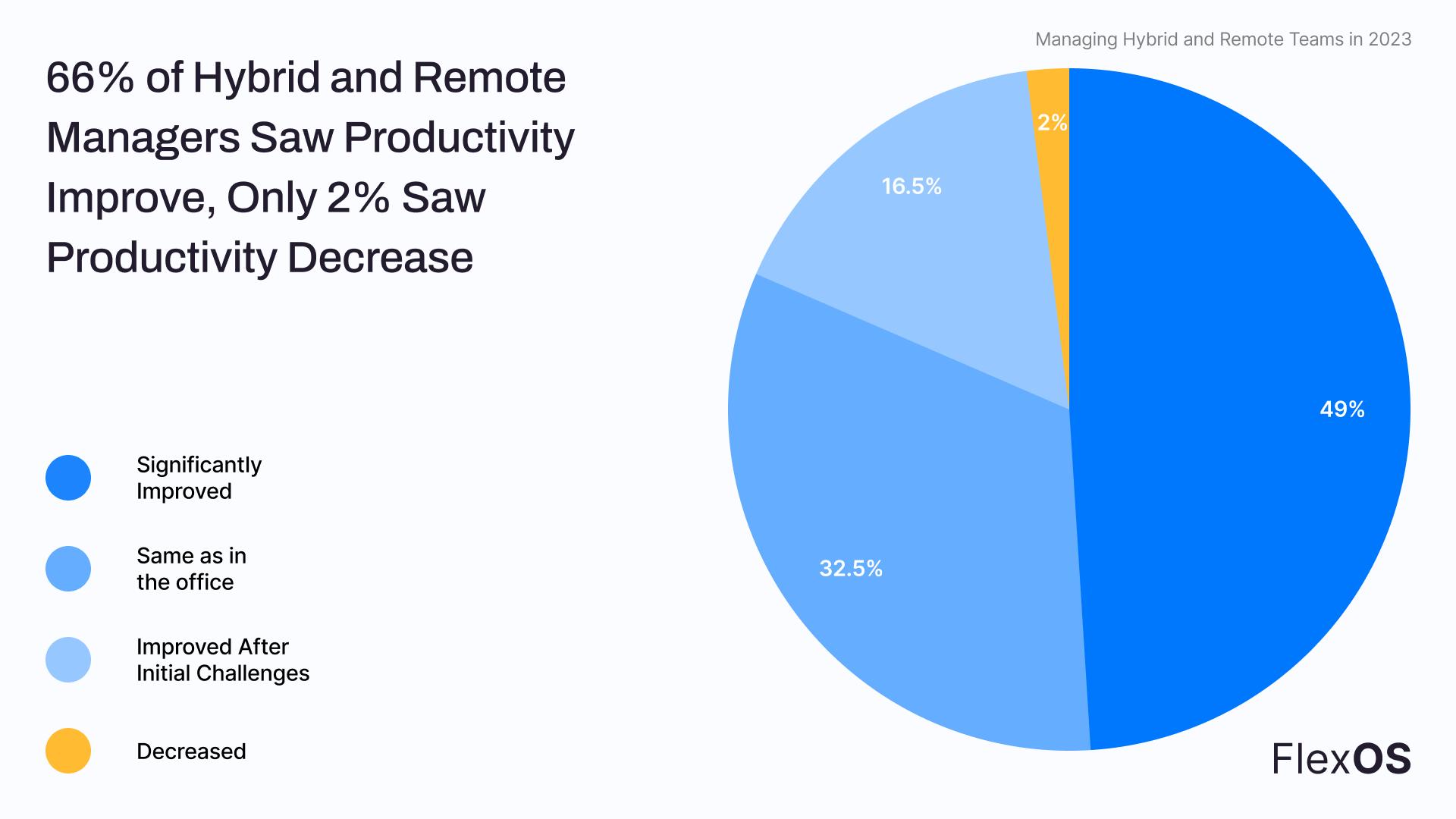

According to survey findings, hybrid, and remote work have overwhelmingly positively affected managers’
performance levels. 66% of randomly selected managers experienced improved performance levels, of which 48.5% said productivity has significantly improved. In contrast, only 2% of managers saw a decrease in productivity.
Talent Management Excellence presented by HR.com JULY 2023 17 Submit Your Articles
New Research Debunks Common Myths About Remote Work And Productivity
Productivity in hybrid and remote working models is still debated. However, studies, including this FlexOS survey and Microsoft’s, show that distributed work doesn’t harm productivity. Measuring productivity
is challenging, leading to “productivity paranoia” between companies and employees. In reality, productivity isn’t a challenge and should be embraced.

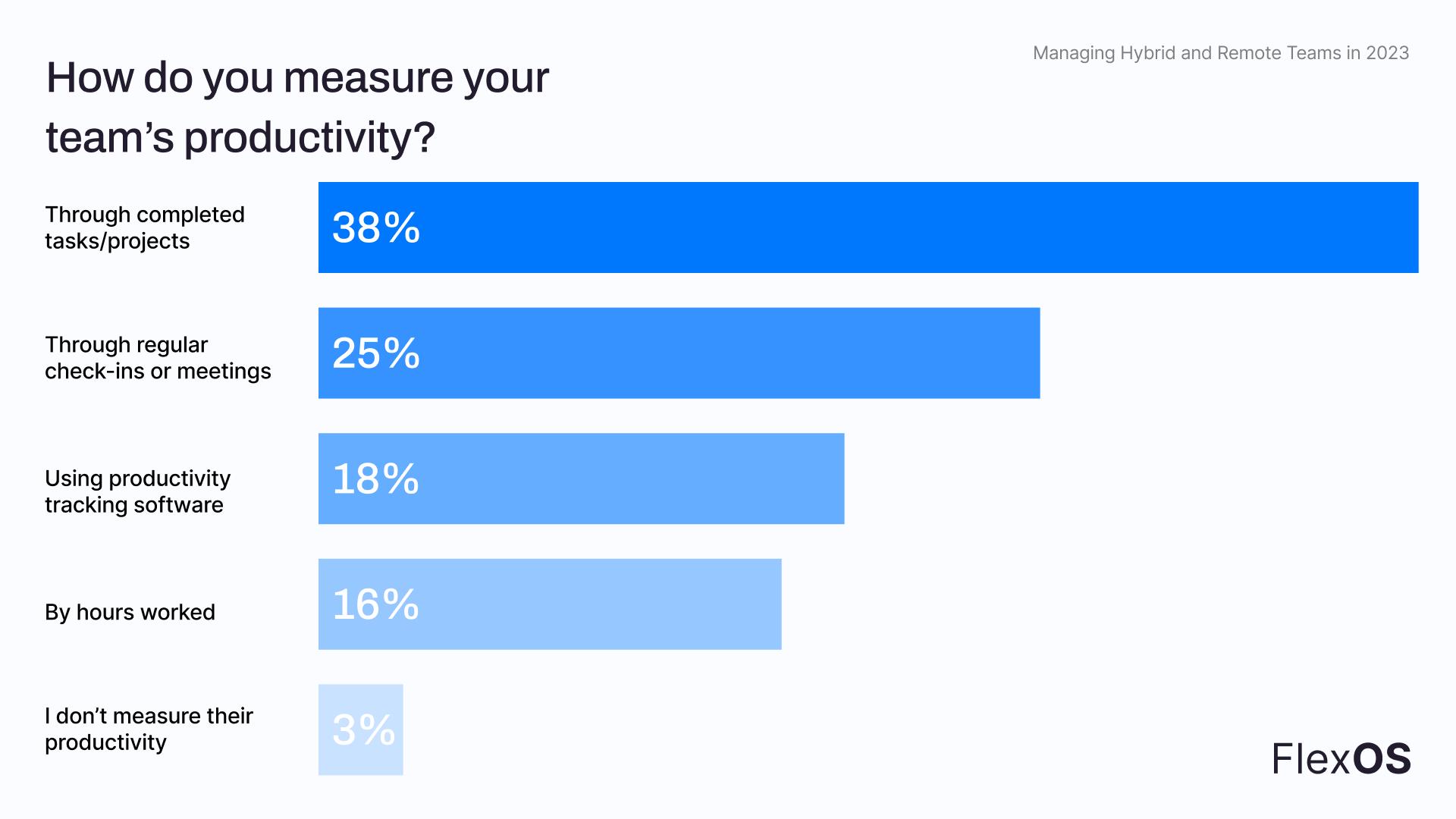
Talent Management Excellence presented by HR.com JULY 2023 18 Submit Your Articles
New Research Debunks Common Myths About Remote Work And Productivity
Trust in Teams Is Equally High
The survey shows high levels of trust in hybrid and remote work environments. 98% of managers are confident in their teams’ ability to deliver results on non-office days, which goes against the conventional wisdom that remote work breeds doubts about productivity.
Managers trust their employees, with 60% saying they trust them completely and 37% mostly. Time-tracking and productivity-tracking software is used by only 26% and 36% of hybrid and remote managers, respectively. Most managers measure productivity by completed work and regular check-ins.
Ready for More Remote Work MythBusting?
Most managers find remote work easy and enjoyable, with 77% embracing its flexibility and 62% finding it very enjoyable.
Remote Teams Are Happier and Have a Better Work-Life Balance
Many managers have reported various benefits of implementing hybrid or remote working models. According to their feedback, such models have improved employee satisfaction, better work-life balance, and reduced worker commuting stress.
Additionally, remote working has enabled companies to access a more diverse talent pool, which has made them more attractive to job seekers. It seems that hybrid and remote working models have become increasingly popular among companies looking to boost productivity and enhance employee well-being.
Challenges Do Exist – and They’re Very Human
The above doesn’t mean there aren’t challenges for managers. There are.

Talent Management Excellence presented by HR.com JULY 2023 19 Submit Your Articles
New Research Debunks Common Myths About Remote Work And Productivity
Asked what their largest challenges are in hybrid and remote team management, leaders answered universally that distractions at home bug them, especially kids and other family members.
A lack of face-to-face interactions results in delays and miscommunication. Managers wish there were more opportunities for personal interaction because understanding and managing emotions without face-to-face interaction was mentioned as a challenge.
In third place of the most common challenges… “wait, you’re breaking up.” Yes, it’s technological or connectivity issues. Managers told us this can be frustrating since they cannot control people’s home internet. We hear you…
Technology Is More Important Than Ever
Technology is crucial in effectively managing remote teams. Video conferencing is the top choice for 88% of hybrid and remote teams, followed by collaboration and document-sharing platforms like Microsoft Teams at 60%, instant messaging tools at 46%, time-tracking software like Time Doctor at 26%, and project management platforms like Monday.com at 25%.
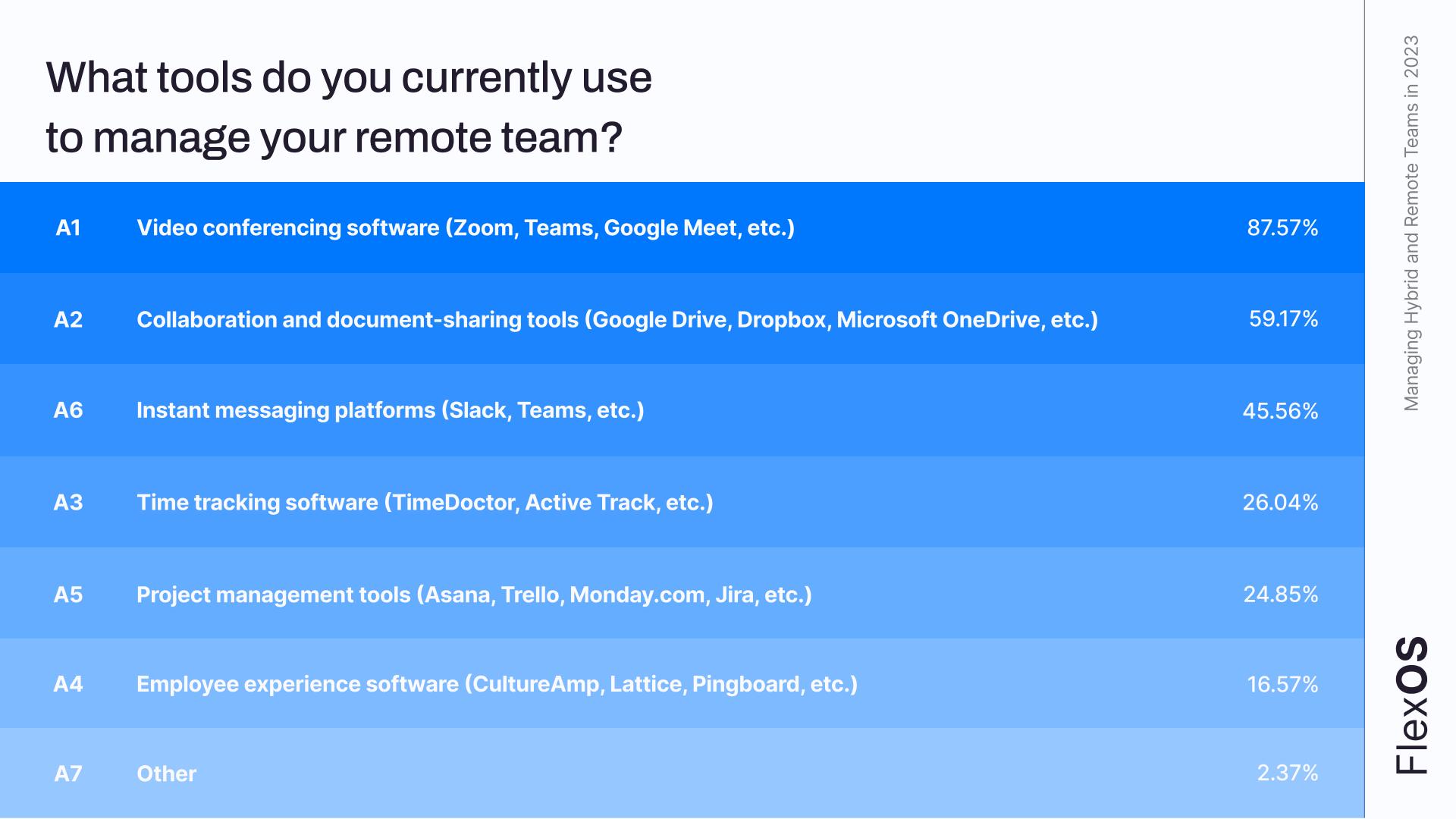
Talent Management Excellence presented by HR.com JULY 2023 20 Submit Your Articles
New Research Debunks Common Myths About Remote Work And Productivity
The trend towards remote work has been on the rise for a while now, and the Covid-19 pandemic has only accelerated this shift. As a result, companies are discovering new ways to engage remote employees. From wellness programs to team-building activities, businesses invest in initiatives promoting a sense of community and fostering collaboration.
However, remote managers are still facing some challenges. They want access to better technology and more training opportunities to help them navigate the unique demands of managing a remote team. In fact, only a small percentage of managers feel they have all the necessary knowledge and tools to be effective in their roles.
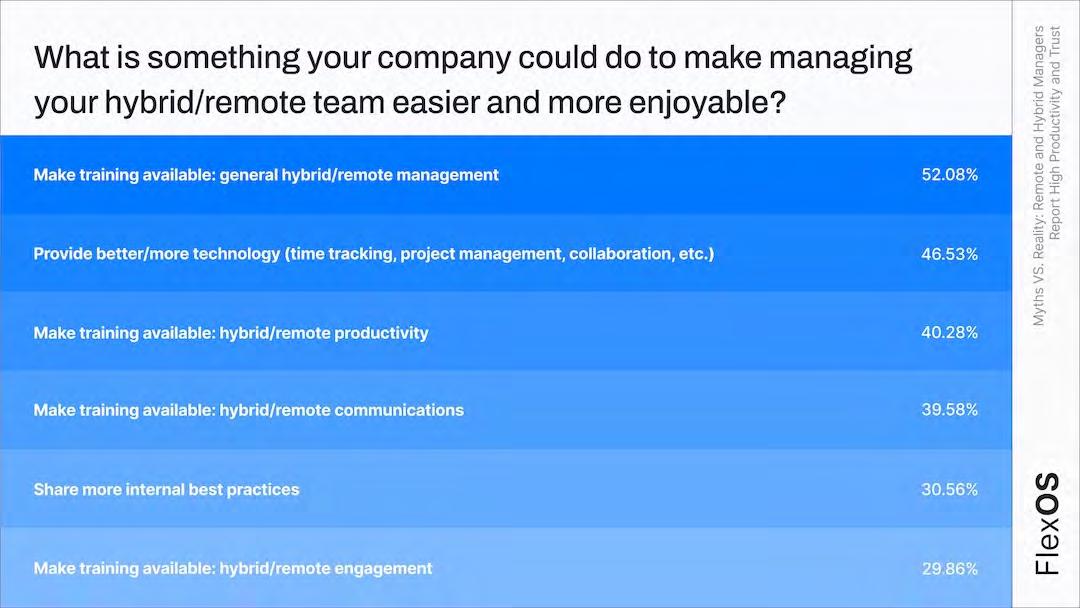
Talent Management Excellence presented by HR.com JULY 2023 21 Submit Your Articles
New Research Debunks Common Myths About Remote Work And Productivity
Despite these challenges, remote work is becoming an increasingly viable option for companies looking to expand their talent pool and stay competitive in a rapidly changing business landscape.
How About the Office Then?
Only 26% of employees would do so happily when asked to return to the office full-time. 15% would consider looking for a new job, and 59% would only return if necessary.


Talent Management Excellence presented by HR.com JULY 2023 22 Submit Your Articles
New Research Debunks Common Myths About Remote Work And Productivity
This survey shows that people don’t want to be in the office constantly but still need a space to focus and collaborate with colleagues.
The Increased Importance of Managers
As organizations transition to hybrid and remote work, the role of managers becomes increasingly vital. They are tasked with solving the unique challenges of these new work arrangements. The recent survey focused on managers and their experiences with these changes.

By understanding their perspectives, we can better support them in their leadership roles and create a more productive and collaborative work environment for everyone involved.
Based on the survey results, it is imperative that organizations reassess their strategies for hybrid and remote work. Acknowledging the positive effects of remote work on productivity, employee satisfaction, and trust-building is crucial to fully embrace its potential benefits.

About the survey:
The survey was conducted through the Pollfish panel of 200 hybrid and remote managers in the USA across all age ranges above 24 years old, seniorities, and industries. The survey ran in June 2023. Respondents were invited using a double opt-in: they confirmed their interest, created a profile via a verification process, joined the respondent pool, and were invited to take the survey as they fit the targeting criteria.
Daan van Rossum is the CEO of FlexOS , the platform that unleashes the power of hybrid and remote teams. Prior to leading FlexOS, Daan was CEO at Dreamplex, the leader in Workplace Experience, before which he ran his well-being startup, Bright. This followed a 9-year engagement with Ogilvy, for which he worked as a Regional Strategy & Innovation Director across their Amsterdam, New York, Chicago, Singapore, and Ho Chi Minh City offices.
Would you like to comment?
Talent Management Excellence presented by HR.com JULY 2023 23 Submit Your Articles
New Research Debunks Common Myths About Remote Work And Productivity
Align your brand with this year’s State of the Industry hot HR topics and showcase your expertise

Sponsor any of this year’s state of the industry research topics and come away with your very own affordable and branded research report and infographic, establish yourself as an industry thought leader by presenting at a one-day Virtual Event, and bolster sales through the generation of qualified leads.
The State of Human Experience in the Workplace Virtual Event
Aug 16, 2023
Learn more at: hr.com/ HumanExperienceResearch
The Future of Talent Acquisition
Virtual Event
Sept 6-7, 2023
Learn more at: hr.com/FutureTalentAcquisition
The State of People Analytics
Virtual Event
Sept 20, 2023
Learn more at: hr.com/PeopleAnalytics
The State of Employee Retention
Virtual Event
Oct 18, 2023
Learn more at: hr.com/EmployeeRetention
HR Skills and Education Virtual Event
Nov 01, 2023
Learn more at: hr.com/hr-skills-and-education
The Future of AI Recruiting Technology Virtual Event
Nov 15-16, 2023
Learn more at: hr.com/RecruitmentTechnologies Research

Successful Talent Management Strategies From Hire to Retire
Nov 30, 2023
Learn more at: hr.com/TalentManagement
Talent Management Excellence presented by HR.com JULY 2023 24 Submit Your Articles
list of hot industry research topics below and give us a call to get started. A State of the Industry Research & Virtual Event Sponsorship Opportunity Contact us today to get started at sales@hr.com | 1.877.472.6648
hr.com/industryresearch
See
|




Sponsored by: Use continuous feedback to nurture a strong manageremployee partnership
Management 2023 INTERACTIVE JULY 2023 Special Research Supplement July 2023
The Future of Performance
The HR Research Institute, powered by HR.com, the world’s largest social network for Human Resources professionals, is a key part of our mandate to inform and educate today’s HR professionals. Over the past three years, the HR Research Institute has produced more than 85 exclusive primary research and state of the industry reports, along with corresponding infographics in many cases, based on the surveys of thousands of HR professionals. Each research report highlights current HR trends, benchmarks, and industry best practices. HR Research Institute Reports and Infographics are available


www.hr.com/featuredresearch



The Future of Performance Management 2023 27
RESEARCH REPORT SUMMARY Survey conducted by: Sponsored by: Fueling Excellence: The Three Ps That Define a Winning Performance Management Strategy By Natalie Trudel, emPerform and Liam Collopy, Quisitive 33 How Performance Management Tech Can Prepare Your Organization for the Future
39 Talent Management Excellence presented by HR.com JULY 2023 26 Submit Your Articles INDEX
ARTICLES
By Ryan Houmand, Bridge
always free, at
online, and
The Future of Performance Management 2023



Use continuous feedback to nurture a strong manager-employee partnership


Today’s employers have a historic performance management problem. U.S. productivity seldom declines on an annual basis, but in 2022 there was a decline of 1.6%, the largest in half a century.
What’s more, 2023 started off with a first-quarter decline of 2.1%. Amid these trends, businesses are striving to improve their performance management processes, with a renewed emphasis on improving overall performance. As organizations struggle to boost their overall performance—as well as the performance levels of individual employees— they are working to improve their performance structures and systems. To better understand the details of what they’re doing, HR.com’s HR Research Institute conducted a study, The Future of Performance Management 2023.
27 RESEARCH REPORT SUMMARY STATE OF THE INDUSTRY RESEARCH
Exclusive Study By The HR Research Institute
Key Findings
● Most organizations fail to meet important performance management (PM) goals to a high or very high degree, a problem that seems to have grown worse in the last year.
● Over the past two years, performance management has changed in a variety of ways to focus more on the needs of employees.
● Organizations too often lack accurate performance metrics
● Most managers lack PM-related training and accountability, which could help explain poor performance management skills.
● Although a majority of HR professionals think that top leaders see performance management as useful, many still believe leaders see it in a negative way.
● Most organizations use digital technologies for the purpose of performance management,
but the technologies often fall short in certain ways.
The Effectiveness of Performance Management Today

We asked respondents to identify the degree to which their company’s performance management processes bring about ten major PM outcomes. As shown below, for the last two years, most organizations have not received high and very high degrees of performance management results.
Further, there has been a considerable decline in those results from 2022 to 2023. Perhaps the most concerning news is that, in 2023, only a third (34%) of organizations’ performance management processes led to the ability to meet all organizational performance management goals” to high and very high degree, as compared to more than two-fifths in 2022 (44%).
28 RESEARCH REPORT SUMMARY STATE OF THE INDUSTRY RESEARCH
To what degree does your organization’s performance management process result in the following? (percent responding high and very high)
Ability to meet all organizational performance management goals
Improved employee performance
Improved employee retention
Improved corporate culture
Improved distribution of rewards
Better employee development
Increased employee engagement
Better risk management
There was an especially large drop in the percentage of people saying performance management has improved employee performance to a high or very high degree
0 10 20 30 40 50 44% 34% 44% 33% 32% 24% 39% 32% 30% 23% 35% 28% 37% 31% 34% 28%
2023
2022
29 RESEARCH REPORT SUMMARY STATE OF THE INDUSTRY RESEARCH
How Performance Management Has Evolved Recently
How has performance management changed over the last two years?
Generally speaking, we found that organizations are most likely to have increased their focus on interacting with individual employees. In fact, about a third (32%) report their organization is conducting more one-on-ones with their employees, and an equal proportion say they afford employees more opportunities to have greater input into their performance goals.
How Leaders View Performance Management

We asked respondents to pick the one factor that best represents how top leaders view performance
management in their organization. Three-fifths indicate that top leaders think performance management is useful in some way (56%), such as aiding employee development (15%), improving engagement (15%), boosting performance (13%), or as an effective way to make employee-related decisions (13%).
However, the remaining 40% view performance management in a negative light. In fact, thirty-four percent say that top leaders view performance management as a “necessary evil,” suggesting that leaders may struggle to understand how to do performance management well.
Further, another 6% say leaders view PM as an “unnecessary waste of time.”
30 RESEARCH REPORT SUMMARY STATE OF THE INDUSTRY RESEARCH
Only 13% say top leaders view performance management as crucial for business performance
In your organization, how do most top leaders tend to view performance? (select the one that best applies)
As a necessary evil
As an aid to employee development
As a means to improve engagement and/or retention
As crucial for overall business performance
As an effective way to make employee-related decisions
As an unnecessary waste of time
The PM Skill Sets of Today’s Managers
Less than a quarter (23%) of respondents say that managers in their organization are skilled at overall performance management. We find this a very troubling number, especially in light of the fact that a mere 31% say respondents agree or strongly agree that managers in their organization have received sufficient training. After all, HR typically is in charge of learning and development, so in many organizations, it should be able to influence the training and skill sets of managers in this area.
56% imply that top leaders view performance management as useful in some way
In essence, many HR respondents are admitting that they either lack the power or the ability to hone the capabilities of managers in the area of performance management. HR thinks managers are a little better at helping employees set goals (39%), though just 30% say think managers are good at having conversations about workplace performance and behaviors. So, it’s little wonder that most managers themselves are unsatisfied with performance management (70%).
31 RESEARCH REPORT SUMMARY STATE OF THE INDUSTRY RESEARCH 0 5 10 15 20 25 30 35 34% 15% 15% 13% 13% 6%
Editor's note: The graph above excludes the “other” category responses, which amounted to 4%.
The Future of Performance Management

Given previous findings in this report, we see it as a positive sign that nearly three-fifths (58%) of respondents foresee more frequent and continuous feedback over the next two years in their organizations. It is also encouraging to find that more than half anticipate greater manager training (55%) as well as more frequent, natural conversations (48%).

We suspect, given our findings, that many managers need training on how to better interact with employees to build rapport. Further, respondents may see value in training to better prepare managers, direct reports and their teams on how to give and accept feedback in a clear, concise and positive way, particularly as it relates to development activities (47%).
For more insights on the topic and valuable takeaways, read the complete report.

32 RESEARCH REPORT SUMMARY
STATE OF THE INDUSTRY RESEARCH
Read the Research Report
Fueling Excellence: The Three Ps That Define a Winning Performance Management Strategy
Your guide for building an effective performance management strategy that propels your business forward
As a performance management software vendor for the last 20 years, we interact with HR leaders daily to discuss their ongoing challenges with employee performance reviews and the need to restructure performance management.
Whether it’s about reviving an inefficient legacy process, engaging talent more effectively to improve results and reduce attrition, or trying to do more with less by automating core HR processes, we have found that a successful performance management strategy hinges on three key factors:
● Purpose: What are the desired outcomes?

● People: Who should be involved and when?
● Process: How should it work?
These three Ps have the potential to skyrocket your chances of achieving strong employee engagement and company greatness. However, the slightest misalignment can weaken the entire program. We often encounter impressive performance
management processes that fall short due to missing elements like relevant or measurable content, clear intent, or not involving the right people. Even if you feel like you’re starting from scratch, there’s untapped potential in your processes and your people waiting to be discovered. By taking a step back to define your purpose and plan the bigger picture, you have the power to make significant improvements that will transform your organization.
Purpose
One of the biggest challenges identified with rolling out a successful performance management strategy throughout an organization is the disconnect between the plan and what the organization wants to gain from it. Legacy processes often leave HR, leadership, and employees questioning if they are simply going through the motions and doing it ‘just to check a box.’
STATE OF THE INDUSTRY RESEARCH 33 ARTICLE
Natalie Trudel, emPerform and Liam Collopy, Quisitive
When designing or redesigning your performance management strategy, ask, ‘What’s the entire purpose?’
● What bottlenecks or issues are you looking to diagnose or overcome with a new strategy?
● What perceived value do you want your employees and managers to extract at every stage? What’s in it for them?
● What value should the business expect, and what will be the performance indicators?
● What key metrics are you looking to collect and analyze for decision-making?
● What factors of performance should be assessed and analyzed? Goals? Values? Development? Skills? Career growth?
● What regulations or regulatory bodies (if applicable) are in place (like accreditation requirements or union standards) that might dictate format and reporting needs?
● What cultural or organizational values or drivers should be incorporated into the design and why?
This clear focus on purpose will help ensure the program is designed with intent specific to your company and your people. Having a clear purpose is also essential before tackling the next two Ps.

People

Performance management starts and ends with people. Period. Who is involved, how much they are involved, and why they are involved can make a significant difference in whether employees and managers get on board and stay on board.
Critical ‘People’ aspects of the strategy that should be considered include:
Get Leadership Support & Buy-In
The successful adoption of any organizational change requires buy-in from the top. Company leaders should not only support HR’s performance management vision and processes, but they should also outwardly champion it. In his Harvard Business Review article, ‘The Hard Side of Change,’ author Harold L. Sirkin notes that employees are unlikely to change if they don’t see the company’s leadership backing a project.
Involve your company’s leadership team in performance management planning and consider their input in how the process will work. Share valuable metrics with them to fuel their ability to lead the company and make people decisions. Ensure expectations are clear at all levels, and that follow-through and commitment are tracked and reinforced regularly.
STATE OF THE INDUSTRY RESEARCH 34 ARTICLE
Ask Employees
Including employees in the performance review process through self-assessments is highly beneficial. Self-assessments empower employees to contribute to their own success. Employees become more motivated and accountable by reflecting on their strengths, performance, and growth opportunities, and by looking to the future and what they want to accomplish. This approach also shifts reviews from one-sided critique to a balanced, two-way discussion. Self-assessments provide valuable insights for managers, aiding in better meetings, career planning discussions, goal setting and driving change. By requiring self-assessments, employers gain a deeper understanding of what motivates performance, engagement and retention and increases the value of performance reviews for all stakeholders. Many companies have avoided self-assessments in the past due to the amount of work entailed, but today’s technologies make it much easier to engage employees in performance management, career planning, and tracking throughout the year.
Listen to More Voices
The impact of an employee’s day-to-day performance extends beyond the employeemanager relationship. With employees collaborating across multiple teams and managers to achieve company goals, relying solely on manager input in performance reviews overlooks a significant piece of the puzzle.
or for a more advanced and manageable approach, requested via an easy-to-use performance management system. The goal is to foster a culture where employees recognize that their daily behaviors and actions are acknowledged on a broader scale and considered during evaluations. As an added benefit, input from others often uncovers observations that would have been otherwise missed and empowers managers to provide more thorough reviews and feedback.
Train and Retrain
Getting the right people involved is just the beginning; equipping them with the necessary tools is equally important. Even with a welldesigned performance review process, employees will lose faith if they don’t understand the intent or design, managers fail to provide appropriate feedback, or 360° reviewers prioritize opinions over behaviors. To mitigate these issues, we suggest communicating with your workforce about the purpose of feedback and providing specific guidance on expectations. Share tips on what the feedback should emphasize and when it should be provided. Emphasis the importance of keeping the feedback objective, specific and concise. Giving effective feedback isn’t easy, and investing in feedback training for managers, and even the entire company, is worthwhile each time a formal performance management review cycle occurs. For valuable resources on this topic, visit our blog at www.emperform.com/blog
Considering others for employee feedback beyond managers and second-level supervisors and embracing company-wide multi-rater peer input is crucial. Both informal and formal 360° feedback can be solicited and managed via email or surveys,

Process
Your performance management “Process” deserves careful consideration. This element encompasses how the process operates and functions throughout the year or cycle.
STATE OF THE INDUSTRY RESEARCH 35 ARTICLE
Once-a-Year Isn’t Enough – But How Much Is Too Much?
Traditional annual appraisals often fall short in providing employees with timely feedback for their ongoing development and progress tracking. Instead, organizations are redefining their processes to incorporate regular check-ins and frequent conversations about goal progress, employee career development, and overall satisfaction.
How a company’s performance management process ‘should work’ depends on the previous two ‘Ps Purpose & People, and two other main factors:
● What your organization currently has in place for performance management

● Your company’s culture
While this approach holds promise and logic, it’s crucial to acknowledge that a one-size-fits-all solution doesn’t exist. Not every company or group of employees will benefit from formal monthly or quarterly check-ins. Therefore, we strongly advise our clients to assess their unique needs thoughtfully and tailor each group’s performance management process accordingly. Having multiple approaches within an organization is not uncommon.
It’s Okay to Evolve
Taking a phased approach to process changes is often more effective than trying to change too much, too soon. For instance, starting with mid-year meetings and assessing progress before transitioning to quarterly check-ins allows for a smoother evolution of the performance management program. Define your long-term performance management vision and then create a timeline for tactical execution that makes sense for your organization.
Let’s discuss a common scenario: If a company has a tenured workforce of managers used to annual 25-minute appraisals every January, it is almost impossible to introduce formal monthly or even quarterly check-ins without resistance. HR teams should plan a transition strategy from where they are now to where they would like to be and ensure their workforce knows the trajectory and expectations. We suggest phasing it in gradually. As an example, start with a mid-year check-in, informal feedback, and performance journals, then move to quarterly and monthly reviews and 360° assessments.
For companies that operate around long-term projects, annual reviews might not make sense, and instead, a company may choose ad-hoc project evaluations throughout a project lifecycle.
Newer companies or those with significant change or employee headcount growth may justifiably have feedback-hungry employees, so a swift evaluation of current and desired future state performance management processes might be the best strategy for the company at that point in time.
Similarly, larger or more complex organizations might require several different processes to meet the needs of individual locations or divisions.
STATE OF THE INDUSTRY RESEARCH 36 ARTICLE
The point is that your company’s performance management strategy should reflect your company and its goals, and that may change over time or in specific situations as the business evolves. Being flexible and listening to your leaders and employees will make the evolution of your processes a better experience for everyone.


Tools Matter
Annual reviews have a bad reputation for multiple reasons, one being the amount of time and effort it takes the HR team to administer them. However, with modern software solutions like emPerform offering affordable options for automation and efficiency, companies are no longer hampered by manual processes. Regardless of your process, having the right tool matters. Choosing a software platform that is intuitive, easy-to-access, and integrates with your other core HR tools will help unlock the full potential of your performance management strategy.
In Conclusion - Propelling Performance Management


Creating a winning performance management strategy involves considering three crucial aspects: Purpose, People, and Process. Understanding the purpose of your program and aligning it with desired outcomes is essential. Engaging the right people, including leadership support, employee self-assessments, and 360° feedback, is vital for success. Finally, tailoring the process to your organization’s unique needs, whether through phased changes or customized approaches, ensures maximum effectiveness.
Remember, there is no one-size-fits-all solution. Each organization must carefully assess its circumstances and goals to design a performance management strategy that drives continuous improvement and meaningful feedback. By focusing on the three Ps and adapting the process accordingly, you can create a performance management program that strengthens your company’s performance and empowers your employees to thrive.
Would you like to comment?
STATE OF THE INDUSTRY RESEARCH 37 ARTICLE
Natalie Trudel is the Director, Marketing at emPerform, a Quisitive Company
Liam Collopy is the Senior Vice President, People & Culture at Quisitive
WHEN IT COMES TO IDENTIFYING, DEVELOPING & SUPPORTING TOP TALENT, THE RIGHT EQUIPMENT MATTERS
HIGH PERFORMING TEAMS PROPEL YOUR BUSINESS

Great companies understand that the right people can boost results and launch a business to new heights. emPerform’s all-inclusive and fully flexible performance management platform streamlines the complexities of performance reviews and integrates with your existing HR systems so you can align, coach, and engage hyper-performing teams year round.
emPerform.com/propel
How Performance Management Tech Can Prepare Your Organization for the Future
Ryan Houmand, Bridge
Performance management is foundational to the success of your organization. Driving the best outcomes today and anticipating tomorrow’s needs requires alignment of goals and clarity of communication.
The organizations best placed to meet shifting demands and adapt in the face of uncertainty are those that invest in their people, develop their skills, and engage them by recognizing and rewarding growth.
Effective performance management must move beyond simply measuring outputs. It must take a holistic approach to the workforce and the value of people.
When your performance management strategy fosters continuous conversation, ongoing development, and shared goals, you unlock the full potential of your people and direct your organization toward future success.
The Need to Adapt With a Future-Ready Performance Management Strategy

Organizations need new tools and strategies to meet their evolving needs in times of uncertainty, where budgets are tighter and skills gaps are growing ever wider.
Business leaders see a growing need to transform in order to remain successful, according to the World Economic Forum’s The Future of Jobs 2023 report. For leaders, the most common roadblocks preventing organizational transformation are a lack of skills and difficulty attracting suitable candidates. Over 80% of leaders consider investing in their current employees a priority.
Your workforce holds the key to stability, growth, and success, and meeting your organization’s current and future talent needs means embracing a collaborative and personalized approach to performance management.
To unlock their full potential, your organization needs an integrated performance management solution that simultaneously engages your people with ongoing development opportunities, while providing visibility into your skills landscape.
4 Ways You Can Use a Performance Management System to Create Better Organizational Results
Powerful performance management tools can provide complete visibility into your workforce, skills, and goals to help navigate the future, anticipate change, and retain your skilled workers.
STATE OF THE INDUSTRY RESEARCH 39 ARTICLE
While adopting tech won’t create value by itself, a solution that aligns with your organization’s needs can strengthen the connection between development and performance and generate a more significant impact.
Here are four feature-based benefits of a performance management platform, including some of the ways in which they can inform talent conversations and create a culture of sustainable, future-ready outcomes.
1) Enable Performance Conversations and Feedback
At the heart of effective performance management is ongoing communication. A good platform will make it easy for employees to track their goals, collaborate on agendas, and proactively seek input from peers and managers.
Stronger lines of communication and access to transparent data help to direct conversations and build relationships between managers and employees. A consistent one-on-one cadence isn’t just good for tracking workload and output, it improves employee engagement and wellbeing too. While frequent touchpoints between employees and managers are a must for constructive, strengthsbased feedback and well-being conversations, employees should also have opportunities to connect with peers and mentors that support their growth.
system, managers can comprehensively monitor important goal-related progress and support any gaps in knowledge by directing people toward training and development opportunities.
You can also empower your people in their own learning and development paths. With the freedom to request feedback from others and greater transparency into their goals, they’ll be clear about how they’re developing and how to improve.
This insight can feed into performance reviews, creating a holistic view of your employee’s strengths and areas for improvement.
2) Align Employee and Organizational Goals

Clear and specific performance expectations connect your people to a common purpose and give greater meaning to your organization’s strategic objectives.
When people understand how their work feeds into overall success and know what good performance looks like, they’re more likely to see their advancement potential within the company. Goals keep employees closely aligned with their team and the broader organization. But for those goals to be relevant, they should also be personal to your people.
Enabling peer and mentor reviews and continuous feedback gives people a more rounded view of their performance and provides an accurate picture of their progress that managers don’t always see in the day-to-day. Using a performance management
According to Gartner, when employee goals are aligned to both organizational and individual needs, employee performance increases by up to 22%. Collaborative goal setting is a must for people to see value in their work.
Finding the areas where people want to advance and connecting career development opportunities to these objectives will keep your organization competitive.
STATE OF THE INDUSTRY RESEARCH 40 ARTICLE
A performance management platform that integrates with your wider ecosystem will give you a snapshot of priorities, development opportunities, and skills, allowing you to assign employees to tasks and training that results in business growth. By connecting this data to employees’ skills and career objectives, you can increase strategic alignment and create roadmaps that connect goals with a specific and measurable set of objectives.
For these goals to remain relevant, they also need to be reviewed regularly to check on progress and align with any shifting organizational priorities.
3) Continuously Recognize Achievement
Performance management should be motivational, not demotivational. The way to ensure that it works as a motivational tool is with a strengthsbased approach tailored to individuals in which achievement and growth are consistently monitored, recognized, and rewarded.
Real-time skills and learning data can inform your performance management processes and provide real-time measures of performance success. Whereas tick-box yearly appraisals and cookiecutter review templates can feel negative and impersonal, an ongoing approach to performance that feeds into employee development and career advancement and builds on people’s unique strengths can incentivize growth. This approach can also help people overcome any challenges as they arise.

Rewarding your talent shouldn’t be a once-a-year deal—and hard work and progress should be recognized and acknowledged continuously. Your performance data can also bolster your talent
review processes, giving you a picture of where your strongest performers lie, the employees who best demonstrate company values and those with high-priority skills and knowledge.
4) Strategically Develop Skills and Close Gaps
Personalized development plans result in more effective performance outcomes. When your people have access to skills and career development opportunities that energize them, you increase engagement and drive organizational growth.
As McKinsey findings show, realigning HR processes to match skill needs can boost employee engagement by 50% and productivity by 40%.
Whether via stretch assignments, gigs, or even promotions, you maximize the impact of mobility initiatives by measuring the progress and impact of these initiatives. It’s also a great way to offer learning in the flow of work—another way for people to upskill and reskill while they support other business efforts.
Once you know where this talent exists within the organization and what skills they possess, you can use their abilities to close gaps and improve performance within the business. A granular, upto-date view of employee competencies leads to strategic planning, offers a deeper perspective of your workforce, and enables more effective workforce planning.
When you can see what skills exist and how teams balance each other out, you can ensure that people are using their talents in the best way possible and developing in the right areas.
STATE OF THE INDUSTRY RESEARCH 41 ARTICLE
A comprehensive skills taxonomy can help to spot training opportunities that can close skills gaps— with up-to-date data and a consistent framework to measure success, you can tap into talent pools, deploy their knowledge in the most effective ways, and track L&D progress as people fill these gaps.
More Ways to Optimize Your Talent Management Strategies


Implementing adaptive and transparent performance management processes calls for closer alignment of data, ongoing communication across your organization, and shared goals that preempt and prioritize areas for skills development.
A people-centric approach sets your organization up for long-term success and engages your workforce with meaningful growth opportunities.
To find out more about how Bridge’s platform can give your organization a competitive advantage, contact us at info@getbridge.com
Ryan Houmand’s background is in management, primarily in corporate and retail spaces with organizations like ADP and The Home Depot. He’s an expert in employee experience and engagement. He’s the author of A Passion for Monday and believes everyone should love Monday just like Friday. In his role at Bridge, he spends his days evangelizing the Bridge story and helping Bridge users to love it as much as he does.
Would you like to comment?
STATE OF THE INDUSTRY RESEARCH 42 ARTICLE
This is Ally
Ally wants to develop her product management skills
Bridge recommends the right skills
Business Processes Change Management



Ally gets feedback on her new skills
Ally achieves her goal
Ally completes recommended courses


Why Bridge?
Bridge is a learning and performance platform that transforms organizations by bringing together learning, skills and performance in one unified experience.
FIND OUT MORE

getbridge.com

The Future of Performance Management 2023 Talent Management Excellence • July 2023 For more information: 1.877.472.6648 sales@hr.com www.HR.com/epubs The HR Research Institute tracks human resources trends and best practices. Learn more at hr.com/featuredresearch
4 Things Your Corporate Relocation Policy May Be Missing
The leading factors and trends influencing employee
relocations
By Kelly Cruse, Atlas® World Group
Ifyour organization has open positions, you are not alone. The U.S. Chamber of Commerce shares that companies of all sizes in all industries are struggling to find enough workers. In fact, “if every unemployed person in the country found a job, we would still have more than 4 million open jobs.” For companies requiring hybrid or in-office work environments, this may indicate a need to seek candidates who live further away from the main office than in years past.
Consider your relocation policies for current and prospective employees. The Atlas® Van Lines Corporate Relocation Survey polled decision-makers with responsibilities related to relocation who are employed by companies that have relocated employees during the past two years or plan to do so this year. Leading factors and trends discovered in the survey indicate that now may be a critical time for companies to revisit those policies:
● 68% of companies increased employee relocations in 2022, a 7-point increase from 2021.
● 64% of companies increased their relocation budget in 2022, a 6-point increase from 2021.
● 51% of companies increased international relocations.
● 34% of companies cited economic conditions as the most significant external factor impacting relocation.
● 27% struggled to find qualified employees locally or felt that the Great Resignation was a significant external impact in 2022.
To secure and retain top talent today, it is key to understand and adapt to employees’ needs, especially when it comes to corporate relocations. Below are four elements your corporate relocation policy may be missing:
Inclusions, Not Exceptions
Instead of making exceptions for individual transferees, relocation policies should be built with inclusions that proactively show examples and scenarios that may need to be addressed for employees with visible and invisible disabilities. For example, Europe is behind the U.S. when it comes to accessibility infrastructure – the European Accessibility Act was just passed in 2016 compared to the Americans with Disabilities Act (ADA) which was signed into law in 1990. It is essential to engage with suppliers on the ground to understand the cost and healthcare options for anyone who may need physical assistance.
Talent Management Excellence presented by HR.com JULY 2023 45 Submit Your Articles
TOP PICK
Culture is also important to take into account. For individuals relocating, especially internationally, many cultural elements factor into a decision to relocate beyond adjusting to different lunch breaks, benefits, packages, or measurement systems. Relocation managers should consider innovative and flexible options for countries that may pose some safety risks and be transparent. This way, individuals have all of the information to make a confident decision from the outset.
Opt-in Programs
Job opportunities should be advertised across the company to create equal opportunities. “Diversity, equity, and inclusion” are not just buzzwords but elements necessary for building positive company culture and finding the best people to fill vacant roles. Programs that allow individuals to “opt-in” if they are interested in opportunities requiring relocation show your investment in existing employees’ growth.
Conversely, reconsider relocation assignments as a requirement for promotions. This is also directly tied to company culture by creating a safe space for an
employee to share why the decision to relocate may be difficult. This is particularly relevant for individuals with visible and invisible disabilities, members of the LGBTQ+ community, and more. The Atlas® Corporate Relocation Survey found that more than one in three employees who turned down a corporate relocation cited safety as their top concern. Acknowledging the difficulties some employees may face shows your organization understands their experiences and is invested in them as a person.
Family Relocation Support Resources
The Pew Research Center shares that about three in 10 U.S. citizens live within an hour’s drive of some or all of their extended family. The conversation about relocating likely extends beyond an immediate household and can impact several generations. Atlas data shows that roughly one in three companies reported their relocation offers were declined because of family matters and lack of adaptability by a spouse or partner. This is a significant decrease from 2021, which may suggest that challenges created by Covid-19, such as departures from the workplace due to childcare needs, may be abating for many households. However, the statistics remain high.
Talent Management Excellence presented by HR.com AUGUST 2022 46 Submit Your Articles
4 Things Your Corporate Relocation Policy May Be Missing
While most companies offer assistance, including cost-of-living adjustments and housing, an employee’s partner’s contribution to the household remains a critical factor in relocation. Ensure you are considering not just your employee’s needs but those of their spouse or partner and children. Offer robust resources such as partner/spousal support, childcare, and housing, as well as lump-sum and flexible relocation policies to help guide employees and their families through the relocation process.
Workplace Flexibility
With about half of the corporate leadership wanting their employees back in the office full-time and half of U.S. workers wanting to work remotely in some capacity, the future of workplaces is not settled, especially when 93% of employees working from the office feel their organization could improve the

in-office experience. Regardless of existing relocation policies, companies must develop workplace management policies that make remote work, work/ life balance, voluntary relocation, and flexibility into consideration. No single policy is going to work for all employees, but it must at least be adaptable to work for most employees. This was true before the pandemic and even more so now when employees have tried different working environments and found what works best for them. Again, empathy and understanding are key to providing employees options that may impact where they work – whether for your company or elsewhere.
The future of work, including employee preferences, is in a constant state of evolution. Ensure your organization is evolving with them by continuously reviewing job offerings and relocation benefits to remain competitive and attractive.

Kelly Cruse is the Vice President of Human Resources and Chief Diversity Officer of Atlas® World Group . With more than 20 years of HR experience, Kelly established Atlas’ first Diversity Committee to create a modern, all-encompassing diversity, equity, and inclusion training for employees that goes beyond general race and gender discussions to move toward conversations about microaggressions, equity, and allyship.
Would you like to comment?
Talent Management Excellence presented by HR.com JULY 2023 47 Submit Your Articles
4 Things Your Corporate Relocation Policy May Be Missing
Bending The Age Curve: Creating Age-Friendly Organizations That Work For Women
Best practices to create an inclusive environment
By Kate Milne, Cardea Health Consulting
Population aging in the United States over the past decade has occurred at the fastest rate since 1890 1. The rapidly aging population requires employers to rethink traditional recruitment and retention strategies that typically focus on a younger talent pool. Changing demographics have reduced the steady stream of younger workers previously available to replace older staff. At the same time, many older workers are choosing to stay in the workforce longer. Those 65 and older will account for more than 60 percent of the labor force growth by 2030 2 . The share of older women in this demographic is projected to increase the most.
Creating age-friendly workplaces that support employees to stay at work is one of the best ways to address ongoing and future talent shortages. Age-friendly
organizations also promote age diversity. Age-diverse workplaces have higher productivity, and teams tend to perform better in complex decision-making. 3 Instituting age-friendly policies and practices designed to
support older workers typically benefits those in other age groups. Creating age-friendly environments is also key to supporting women in the workplace.

Talent Management Excellence presented by HR.com JULY 2023 48 Submit Your Articles
Women of all ages are facing significant headwinds at work. According to a recent joint study of over 40,000 employees by McKinsey and Company and LeanIn, women (especially those in leadership) are leaving organizations to switch jobs in record numbers. 4

The main reasons women cited for leaving their current organization were related to issues with workplace culture, burnout, lack of recognition, and microaggressions related to gender. Although companies are working to recognize the impact of the intersectionality of gender with other characteristics, such as race or sexual identity, many Diversity, Equity, and Inclusion (DEI) initiatives fail to acknowledge the significant toll of ageism.
Ageism is especially problematic for women. Gendered ageism
(the overlay of gender on age) impacts women at every stage of life. In a recent survey of women at work, 80% of respondents reported experiencing some form of gendered ageism. 5
A study by Harvard Business Review confirmed that ageism doesn’t just impact older women. The study researchers found that women experienced ageism differently depending on their life stage. Younger women in leadership roles were less likely to be taken seriously and were more likely to be subject to “lookism” (having their performance judged by their appearance). Midlife women were more likely to be passed over for promotions because of the perception that they may be difficult to manage or may be affected by becoming menopausal. Older women were often dismissed as having lower productivity or a lack of investment in the organization 6 .
Incidents of gendered ageism increase with age, and women in midlife and older tend to suffer the most.
Many midlife women do not report health or lifestyle challenges (especially those related to menopause) to managers because of embarrassment, perceived lack of acceptance, or fear of job loss. Most older women are also acutely aware that changes in their looks related to aging can make them subject to lowered perceptions of relevancy and competency, leading to them being passed over for promotions. Workplace stressors can cause women to leave the workforce earlier than intended. Women retire three years earlier than men on average. Making workplaces more age-friendly for the female workforce is a way to address gendered ageism and is a key retention strategy.
Talent Management Excellence presented by HR.com JULY 2023 49 Submit Your Articles
Bending The Age Curve: Creating Age-Friendly Organizations That Work For Women
Age-friendly workplace culture and climate should be designed to support older workers to feel accepted and respected. Employers should ensure that fairness and equality at different life stages are supported, and policies, practices, and culture should reflect a recognition of the contribution of older employees to the organization. Practically, this includes support for career advancement, professional development, reverse mentoring, health and well-being promotion, job crafting, work-life balance, and flexible employment strategies.
To create a more age-friendly environment that also supports your female staff, consider the following best practices:
1. Know your numbers. Start by analyzing the age diversity in your workplace and look at the number of women in each age group.
2. Audit your policies and practices. Are you supporting an age-inclusive environment, and do your DEI policies explicitly outline ageism and gendered ageism as a strategy area?
3. Revisit your policy on flexible work options and accommodations. This includes remote work,
job sharing, and phased retirement. Many women at all life stages are juggling multiple role demands that can be supported by flexible working arrangements.
4. Ensure that your health and well-being programs are age-inclusive Well-being offerings should include age-specific topics like menopausal and caregiving support.
5. Encourage lifelong learning and skill development Support older workers with the opportunity to upgrade their skills and knowledge.
6. Look at your hiring practices Work to reduce age bias in your job posting language and interviewing.
It’s important to recognize that age-friendly workplaces will no longer be optional but necessary. These inclusive environments provide undeniable advantages, including in the recruitment and retention of women.
The age-friendly movement is an appeal to all organizations to re-evaluate their policies, programs, and practices and encourage an age-inclusive work culture. When we invest in age diversity, we invest in a
productive, more equitable, and sustainable future.
Notes
1. U.S. Census Bureau. (n.d.). Age and Sex. Census.gov. Retrieved from https:// www.census.gov/topics/population/ age-and-sex.html
2. Bureau of Labor Statistics. (2021). Projections Overview and Highlights, 2020-30. Monthly Labor Review. Retrieved from https://www.bls.gov/opub/mlr/2021/ article/projections-overview-and-highlights-2020-30.htm
3. AARP Public Policy Institute. (2017). Disrupt Aging in the Workforce [PDF].
4. McKinsey & Company. (2022). Women in the Workplace 2022 [PDF].
5. Marcus, B. (2021, September 20). Gendered Ageism Affects Women’s Job Security and Financial Viability. Forbes. Retrieved from https://www.forbes. com/sites/bonniemarcus/2021/09/20/ gendered-ageism-affects-womens-job-security-and-financial-viability/?sh=7bca7e7d2bc4
6. Diehl, A., Dzubinski, L. M., & Stephenson, A. L. (2023, June 16). Age And Generational Issues: Women in Leadership Face Ageism at Every Age. Harvard Business Review. Retrieved from: https:// hbr.org/2023/06/women-in-leadershipface-ageism-at-every-age
Kate Milne is a healthy aging and workplace well-being specialist and a community-based researcher. She is the Founder and Principal Health Promotion Consultant at Cardea Health Consulting
Would you like to comment?

Talent Management Excellence presented by HR.com JULY 2023 50 Submit Your Articles
Bending The Age Curve: Creating Age-Friendly Organizations That Work For Women
Harnessing Personality Profiles For Talent Pairing And Team Building
A comprehensive approach to talent management
By Gerlie Corachea, Cyberbacker
Iwillnever tell anyone that talent pairing is easy. Doing so effectively requires you to delve into the details of each open position and each candidate to discover what makes each one tick, the work they do best, and the tasks they enjoy most. Then, you can match your clients to the virtual assistants or other employees in your organization with the skills, values, and training they need.
To achieve this, your company needs to develop a value-based personality assessment to screen each applicant. In a hiring role, such an assessment allows you to screen job candidates and get a sense of whether they’ll be a good fit for your company culture. When pairing internal talent with new roles and responsibilities, these assessments help you match employees to the most fulfilling work they can perform
and ensure teams work together as effectively as possible.
Identify the Right Talent for a Job with Personality Profiles
Personality profiles are the first step in focusing your talent search. Today, technological advances and remote workplace environments enable you to take advantage of a global talent pool. If your company leverages work-life counterbalance, geographic flexibility, and a hybrid workplace environment to attract top talent, you will likely have a steady stream of applicants. In fact, according to Distribute Consulting, employers who advertise remote jobs see applications increase by approximately 3,000%.
A full interview roster is a blessing and a curse. As you scan through hundreds or thousands of applications, the bullet points on
those resumés begin to blur, so it helps to have more precise criteria to narrow the pool
Personality profiles enable you to see at a glance who is best suited for a role and who will enjoy the work most. For example, if you are looking for an administrative position, you will focus on finding candidates who are more task-oriented and efficient at multitasking. If you need an enthusiastic salesperson or customer representative, keep your focus on outgoing and open candidates.
With personality assessments, you can screen for people who will be analytical, detail-oriented, team players, or good communicators much faster than you can with traditional resumés or interviews alone. This, in turn, helps you streamline the talent pairing process once a candidate’s onboarding process is complete.
Talent Management Excellence presented by HR.com JULY 2023 51 Submit Your Articles
TOP PICK
Design More Effective Interviews with Personality Assessments
After narrowing your talent pool, personality profiles enable you to hone your interview process. The more thorough your interviews are, the more insight they uncover about your candidates.
Resumés can shed light on work experience and skill sets, but effective interviews dig deeper. In addition to crafting questions about your candidate’s experience, word your questions in such a way that enables you to uncover more details about their character and soft skills, such as emotional intelligence and communication.
Personality profiles help you identify specific questions to ask. Rather than running down a list
of generic interview questions, you can meet candidates with questions individually tailored to their personalities. This ensures that you receive an accurate sense of each candidate and how they will fit into your organization’s culture before onboarding. Essentially, managers who ask the right questions find the right candidates.
Create Stronger Teams with Personality Profiles
As you begin to pair talent with groups and individuals, you can use personality profiling to find people who complement each other’s strengths and weaknesses and build productive teams This allows you to best balance conflicting personalities across teams and departments to
ensure each pairing can work together seamlessly.
For example, some of your applicants may be driven by the need to achieve order, routine, and structure in their work, while others are motivated by a desire to acquire knowledge, learn, and grow. As you pair candidates and clients, you must match their motivations to make their work as effective as possible.
Improve Company Culture with Personality Profiles
The most successful companies have clear values and strong cultures and align their employees around those values. The best way to do this in your organization is by using personality profiles as part of your hiring process.

Talent Management Excellence presented by HR.com JULY 2023 52 Submit Your Articles
Harnessing Personality Profiles For Talent Pairing And Team Building
Personality profiles help you to pair people who are the best fit with each other, the responsibilities of their role, their managers, and their supervisors. This ensures new hires come eager to contribute to the team and the company’s mission from day one onboarding.
Boost Retention with Personality Profiles
Many companies struggle to attract suitable candidates — even those with a strong recruitment process can end up with employees who don’t fit into the company culture. For example, you may hire someone who has the skills for a job but doesn’t
mesh well with other members of your team. This leads to unhappy employees who feel undervalued, which can subsequently lead to higher turnover rates.
Personality profiling helps you attract the right people to your company and ensure they stay. Before hiring, these assessments enable employers to accurately think through the responsibilities of a job and identify the traits that make up their ideal candidate profile.
Before the interview process begins, be sure to advise your clients to touch base with every candidate in the pool. In this
short meeting, they define their expectations for the role and address the qualities they are looking for in a virtual assistant. A thorough understanding of the work ahead enables both parties to enter the partnership with clear expectations. Working relationships are far more likely to succeed when parties talk through responsibilities.

While the process of creating and implementing a personality profile may seem like a lot of work, the ROI is worth the time and resources this will require. As a result, you will hire better employees, develop stronger teams, improve company culture, and boost retention rates.
The bottom line is that personality profiles help you attract and retain the best people for your company. And when you have the right team in place, your business can thrive in any market.
Would you like to comment?

Talent Management Excellence presented by HR.com JULY 2023 53 Submit Your Articles
Gerlie Corachea is the Director of Talent Pairing at Cyberbacker.
Harnessing Personality Profiles For Talent Pairing And Team Building
HRCI® & SHRM® CERTIFICATION PREP COURSES
GROUP RATES AVAILABLE
For HR Professionals
Show that management values the importance of the HR function, and has a commitment to development and improvement of HR staff.
Ensure that each person in your HR department has a standard and consistent understanding of policies, procedures, and regulations.
Place your HR team in a certification program as a rewarding team building achievement.
For Your Organization
Certified HR professionals help companies avoid risk by understanding compliance, laws, and regulations to properly manage your workforce.
HR Professionals lead employee engagement and development programs saving the company money through lower turnover and greater productivity and engagement.
A skilled HR professional can track important KPIs for the organization to make a major impact on strategic decisions and objectives, including: succession planning, staffing, and forecasting.
HR.com/prepcourse CALL TODAY TO FIND OUT MORE 1.877.472.6648 ext. 3
sales@hr.com
|
Why Certification is the Best Choice:
1 Less expensive than a masters or PhD program, and very manageable to prepare with flexible study options.
2. Recertification - ensures HR professionals continue to be up to speed on the latest legislation and best practices
3. Recognized, Industry benchmark, held by 500,000+ HR Professionals
Group Rate Options
We offer group rates for teams of 5+ or more for our regularly scheduled PHR/SPHR/ SHRM or aPHR courses.
For groups of 12+, we can design a more customized experience that meets your organization’s needs. You can have scheduling flexibility in terms of the days, times, and overall length of the course.
Groups rates for HRCI exams are also available as an add-on.
All group purchases come with 1 year of HR Prime membership for each attendee to gain the tools and updates needed to stay informed and compliant.

CALL TODAY TO FIND OUT MORE 1.877.472.6648 ext. 3 | sales@hr.com | HR.com/prepcourse
1 2 3
Exploring The Impact Of AI On Human Resource Practices

How AI can help and hurt HR
By Roza Szafranek, HR Hints
Artificial intelligence (AI) is becoming progressively popular in every business area for its potential to improve efficiency, accuracy, and scalability. This also applies to human resources (HR). But it’s not a simple integration, and AI cannot replace human interactions and emotions. It can, however, be beneficial to help streamline standard processes while offering valuable insights into data and analytics. It can also help save time and money while ensuring a more ethical approach to recruitment and management.
From an HR standpoint, AI can provide accurate data on employee performance that allows quick strategy adjustments, resulting in heightened morale and productivity. For companies looking to make the most out of an AI-driven system, best practices such as providing relevant training materials and setting clear expectations should be implemented to ensure successful integration with existing systems.
Knowing Is Half the Battle
Staying informed on the potential power of AI is essential before adopting it within business practices. This is especially important with ethical implications such as data access, privacy issues, or bias creep due to improper algorithm training data sets.
To ensure these risks are mitigated effectively, organizations must have a robust governance
structure that prioritizes transparency and accountability throughout the entire process - from initial development to implementation and beyond.
For HR leaders, staying up to date on the latest AI trends and best practices is crucial to fully understand what works best for them from a cost perspective and a productivity standpoint. This includes working with the organization’s information technology leaders to understand how different automation solutions might fit within existing workflows.
Talent Management Excellence presented by HR.com JULY 2023 56 Submit Your Articles
How AI Can Help and Hurt HR
AI has the potential to impact the future of HR processes significantly. Here are several positive ways AI can affect HR processes:
● Recruitment and Candidate Screening: AI can streamline recruitment by automating mundane tasks such as resume screening, candidate shortlisting, and initial interviews.
● Bias Reduction: AI can help reduce unconscious biases in HR processes. By relying on objective data and algorithms, AI systems can minimize the influence of human bias in candidate selection, performance evaluations, and promotions.
● Employee Onboarding: AI can enhance the onboarding experience by providing new employees with personalized training plans and resources.
● Employee Engagement and Retention: AI-powered sentiment analysis can assess employee feedback from various sources, such as surveys, emails, and collaboration tools, to gauge employee sentiment and engagement levels.
● Performance Management: AI can provide data-driven insights to improve performance management processes.
● HR Analytics: AI can process and analyze vast amounts of HR data, enabling organizations to gain valuable insights into workforce trends, employee behavior, and organizational performance.
● Employee Well-being and Workforce Planning: AI-powered tools can monitor employee well-being indicators, such as stress levels, work-life balance, and job satisfaction, by analyzing employee surveys, communication platforms, and wearable devices.
Talent Management Excellence presented by HR.com JULY 2023 57 Submit Your Articles
Exploring The Impact Of AI On Human Resource Practices
While AI has numerous benefits, it’s important to consider the potential drawbacks and challenges. One of the biggest hindrances of AI is maintaining team morale, especially regarding job security. Implementing AI in HR can be problematic as you don’t want to scare people that AI will replace them, threatening their professional (and personal) livelihood. When introducing any AI function, company leaders should communicate AI’s role effectively and with sensitivity.
Here are some other challenges associated with using AI in HR:
● Bias and Discrimination: AI systems can inherit biases from the data it is trained on, which can perpetuate existing biases and discrimination in hiring and talent management processes.
● Lack of Transparency: Some AI algorithms, such as deep learning neural networks, can be complex, making it difficult to understand the decision-making process.
● Lack of Human Interaction: AI systems can automate various HR tasks but cannot replicate the human touch and emotional intelligence often required in HR processes.

● Technical Limitations and Errors: AI systems are not infallible and can make errors. They heavily rely on the quality and relevance of the data it is trained on.
To mitigate these challenges, it is crucial to develop transparent AI systems, regularly audited for bias and aligned with ethical guidelines. Organizations should
also involve HR professionals and employees in developing and implementing AI systems to address concerns and ensure a human-centric approach.
AI Can’t Replace Meaningful Human Interaction or Leadership
Artificial intelligence and its rapid development have taken everyone by surprise, and it is a phenomenon that can deepen divisions and separate people. The role of modern HR departments is to prevent this from happening and to react immediately to any inconsistencies that may arise. While AI can be used to automate mundane tasks and provide data-driven insights into employee performance, it cannot replicate the human aspects of HR.
When managing people, we often deal with subjective interpretations of behavior and other consequences toward an employee. This is where discrimination and differential treatment come from. Standardization, unification, and consistent rules, a playbook of behavior is an obvious and necessary step to prevent discrimination.
AI is incapable of understanding interpersonal relationships and empathizing with employees. It cannot consider personal or cultural factors affecting an individual’s behavior or performance, such as background, experiences, or beliefs. Furthermore, AI cannot think outside the box or feel emotion when making decisions, which limits its capacity for creative problem-solving. These limitations can lead to misunderstandings and biases in the workplace if not managed correctly.
Hints
Would you like to comment?
Talent Management Excellence presented by HR.com JULY 2023 58 Submit Your Articles
Roza Szafranek is the CEO and Founder of HR
Exploring The Impact Of AI On Human Resource Practices
5 False Stereotypes About Gen Z That Every Employer Should Know
Stay one step ahead in creating the next generation’s motivational workplace culture
By Rebecca Ahmed, Energetic Impact
Gen Z is the latest generation of young professionals joining the workforce. Are you ready for this next group of tech-savvy, purpose-driven, independent, entrepreneurialspirited “Zoomers”?

To ensure you are prepared for the energetic impact they will bring to the workforce, here are five Gen Z stereotypes, discredited and explained. By understanding their passion and purpose, you will be one step ahead in creating the next generation’s motivational workplace culture.
Gen Z Is NOT Selfish
I am going to debunk this stereotype first, as it sets a precedent for understanding Gen Z. Gen Z knows their values. Their values are their motivators. They
are their compass to ensure they make confident decisions that support their goals, vision, and mission. If you are offering them something that does not align with their values, they have no problem saying no.
How much energy could you have saved throughout your life if you had clarity on what you wanted and aligned your actions with those goals? Rather than judge them, admire them, and learn from them!
Talent Management Excellence presented by HR.com JULY 2023 59 Submit Your Articles
TOP PICK
Looking to get clarity on your values so you can make values-aligned decisions to get you towards your goals with efficiency and ease? Take my Values Driven Solution Assessment to make confident decisions that will drive you toward your vision and mission.
Gen Z Is NOT Lazy
I would love to learn! Why do you think Gen Z is lazy? When I ask this question to leaders, I usually get the same response. Gen Z won’t pay their dues. What tasks were required of you that you classified as “paying your dues”? How energizing and productive were those assignments? Based on my experience, they weren’t. So why do you feel you should be able to treat someone just as poorly as you were treated? How constructive is that approach?

Now that you understand Gen Z is motivated by their values - explore
how to align your requests with their values. I can guarantee you will find some of the hardest working, driven, and engaged workers within this generation. When you speak their language and align your requests with their values, they will jump all in!
Gen Z Does NOT Take Orders Well
You’re right. I will give you this one. Why? Because you are giving them orders! What if you shifted the word to direction? Words Matter. If you want to ensure Gen Z actively listens and executes an assignment, provide them with directions and ask them what their takeaways were from your directions. By soliciting feedback, you can ensure you both are aligned.
Additionally, detach from your solution. Allow space for Gen Z to cultivate curiosity and be creative
in their approach. There are many ways to reach an end goal. If there is a time constraint, provide that so they know the parameters. Who knows? With new tools and technology, you might learn a faster and simpler way to accomplish your goals from them!
Gen Z Does NOT Believe They Know Everything
They know what they don’t want! They know the current system is not working. They’ve seen how destructive its energy is, and its impact on people, nature, relationships, health, and happiness. When you know what the direction of the past leads to and know that’s not what you want for yourself and future generations, you’re willing to explore new destinations. Who knows where these paths will lead to. But Gen Z would literally be “insane” not to try and pave a new way forward!
Talent Management Excellence presented by HR.com JULY 2023 60 Submit Your Articles
5 False Stereotypes About Gen Z That Every Employer Should Know
Gen Z Won’t Achieve Success
What is your definition of success? When you look at the
wheel of life, how successful are you in each and every area? Gen Z is redefining success by all these parameters. Success to them will fluctuate, but the balance
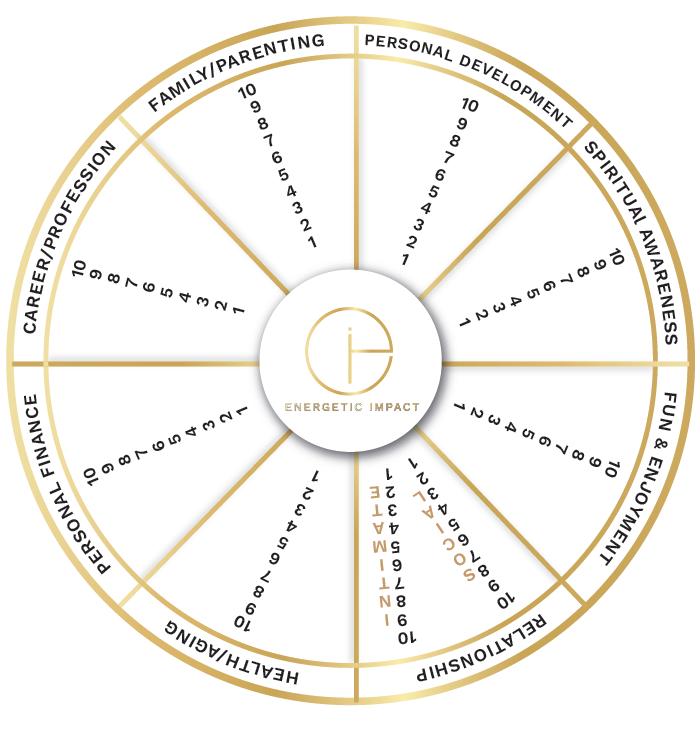
will continue to be at the core to ensure they live a fulfilled life in harmony with their values and energetic impact.
Rebecca Ahmed is an award-winning speaker, business consultant, and an Energy Leadership Index™ Master Practitioner, which is an exclusive training in personal energy and how we can experience, express, and expand it in ourselves and others. As the Chief Energy Officer, and founder of Energetic Impact , her upcoming book Energy at Work: Reinvigorating Strategies to Transform Yourself and Your Workplace will be ready for pre-orders starting October 2023.
Would you like to comment?

Talent Management Excellence presented by HR.com JULY 2023 61 Submit Your Articles 5 False Stereotypes About Gen Z That Every Employer Should Know

ePublication EditorialCalendar2023 Checkoutthenewandupcomingthemed HRtopicsinTalentManagementExcellence. Check ePublications Editorial Calendar Here. Would you like to submit an article? | Write to us at ePubEditors@hr.com Submission Guidelines 1 The State of Pay Equity Aug 2023 2 Gen Z at Work: Attracting, Managing and Retaining the Youngest Generation Sep 2023 3 The Future of Diversity, Equity, Inclusion and Belonging Oct 2023 4 The State of Employee Retention Nov 2023 5 Successful Talent Management Strategies From Hire to Retire / The Future of Compensation and Total Rewards Dec 2023
The Mid-Year Fatigue: Navigating The Exhaustion Of The “Now” Age
5 reminders and tips to restore your energy
By Anja van Beek, Anja van Beek Consulting & Coaching
As we find ourselves in the middle of the year, many individuals that I speak to, both leaders and team members, experience a sense of fatigue.
Do you ever feel like fatigue is an unending cycle, hoping that by conquering your to-do list, you’ll finally find a moment to exhale and relax?
In this technologically advanced age, where the speed of “now” dominates our lives, it’s crucial to recognize the toll it takes on our energy levels and overall well-being. Exhaustion rates in South Africa have risen significantly, with a large percentage of individuals feeling tired and overwhelmed.
According to the Global Workplace Burnout Report, workplace burnout around the world reached a record high in 2020, with 43% of people from more than 100 countries claiming to have experienced workplace burnout. Furthermore, 70% of people experienced burnout in the last year, according to a study by Asana which examined 10,000 knowledge workers across seven countries.
As the demands of our schedules keep piling up, it’s easy to resort to an extra shot of coffee in the morning and that extra glass of wine at night, hoping to find solace from the day’s chaos.
Mid-year fatigue encapsulates that peculiar sensation of feeling simultaneously wired and tired, caught in the whirlwind of responsibilities and exhaustion.
Here are five reminders and tips to restore your energy and combat mid-year fatigue.
1. Embracing Meaningful Breaks
Revitalizing your energy requires embracing regular breaks throughout the year. Studies have consistently shown that individuals who utilize their leave days are more productive, engaged, and loyal. Instead of waiting until the end of the year, plan shorter yet meaningful breaks that excite you. Whether it’s a family camping trip, an invigorating hike, or simply quality time at home (unplugged!), prioritize your own well-being by proactively booking time off.
Talent Management Excellence presented by HR.com JULY 2023 63 Submit Your Articles
This also applies to scheduling more regular breaks throughout your day. Experiment with what works best for you; play around with taking a short break every 30 – 90 minutes. Find an accountability partner at work that will keep you accountable for taking these, or even better, schedule it in your calendars and stick to it.
Remember, managing stress and exhaustion requires giving yourself permission to rest and recharge, free from the weight of consequences or leave-related burdens.
2. Don’t Do It Alone
When you find yourself feeling stuck or overwhelmed, having a trusted thinking partner, coach, or mentor can make a world of difference. Seek out someone who can lend a non-judgmental ear, offering valuable insights and a safe space for you to be heard. Consider forming a “vent buddy” system, where you can combine exercise with an open conversation to keep cortisol levels in check. By joining a walking
club or engaging in regular physical activity, you can support each other’s well-being while fostering lasting connections.
Furthermore, mentoring can serve as a powerful catalyst for career growth. Schedule consistent sessions with a coach or mentor, ensuring ongoing support, guidance, and accountability on your personal development journey.

3. Discovering Meaning and Purpose
Combatting exhaustion begins with finding genuine meaning in your work.
Get a clear picture of your strengths and passions and find the link to your day-to-day job. Further, reflect on your perception of work. Is it merely a means to an end or an opportunity to create a quality life for yourself and your loved ones? By understanding the deeper meaning of your work, you can establish healthier boundaries.
Talent Management Excellence presented by HR.com JULY 2023 64 Submit Your Articles
The Mid-Year Fatigue: Navigating The Exhaustion Of The “Now” Age
Research shows that individuals who cultivate happiness and fulfillment outside of work experience greater satisfaction in their professional lives. Get clarity on your bottom line as to the reason why you get up in the morning.
You can build on this by considering all aspects of life, not only work, and find a goal for each of those areas you want to develop over the next few months.
4. Focus on the Basics
We all know the importance of taking care of our bodies to enhance our brain capacity and increase our high-performance energy levels. Regular exercise, sufficient water intake, the right nutrients, a consistent sleep/wake cycle, and a solid mindfulness routine is all common knowledge.
Unfortunately, common knowledge is not always common practice. Or, perhaps, you may find it challenging to know where to start.
Choose one area and start by making small tweaks to your daily habits. Focus on being 1% better than the previous day. You will be surprised to see how
your energy levels increase by taking better care of your body.
5. Fostering Mental Health Conversations

In the ever-evolving landscape of work, it is crucial to create an environment where mental health discussions are welcomed. According to the Microsoft Worktrends Report, unmanageable workloads and a lack of empathy from employers led 41% of employees to contemplate leaving their jobs.
Acknowledging the impact of unmanageable workloads on your mental health is important. Also, don’t see limitations as a sign of weakness. Initiate an open dialogue about mental health, especially if this starts impacting your results and the quality of your work. If you feel you can’t open up to our manager, reach out to your HR department to explore Employee Assistance Programmes or other available resources to support your mental health.
As an international, highly sought-after coach, speaker, trainer, and published author, Anja van Beek has more than 20 years of experience enhancing the performance of individual executives, teams, and organizations. She is an Agile Talent Strategist, Leadership & HR Expert, and Executive Coach. Anja was one of the first to be authorized as an Agile People professional and facilitator. She partners with leaders and HR teams on all people-related aspects with a specific focus on integrating agile principles and practices. She is a leadership coach and an expert in supporting teams to remain relevant and thrive in the future of work.
Would you like to comment?

Talent Management Excellence presented by HR.com JULY 2023 65 Submit Your Articles
The Mid-Year Fatigue: Navigating The Exhaustion Of The “Now” Age
WEBCASTS VIRTUAL EVENTS
The State of Human Experience in the Workplace August 16, 2023
The Future of Talent Acquisition
September 6-7, 2023
The Future of Personalized HR Services and Experiences
View our Upcoming Virtual Conference Schedule and Register Today!
Conquering the ACA Audit Danger: Lessons from Home Healthcare
HR Pro to HR Pro: Preventing and Counteracting the Effects of Employee Burnout
July 26,
August 2, 2023
3:00 PM - 4:00 PM ET REGISTER
View our Upcoming Webcasts Schedule and Register Today!
VIRTUAL EVENTS & HR.COM WEBCASTS UPCOMING www.hr.com/upcoming_webcasts
www.hr.com/virtualconferences
REGISTER
REGISTER
REGISTER
2023 2:00 PM - 3:00 PM ET REGISTER
September 13, 2023
Connecting the dots between fertility benefits and health outcomes July 25,
1:00 PM - 2:00 PM ET REGISTER
Growing needs, evolving trends: What global employees expect from fertility benefits today 1:00 PM - 2:00 PM ET REGISTER
August 16, 2023 2023 2:00 PM - 3:00 PM ET REGISTER
Barbara Corcoran Talks the Total Economic Impact of Paycom August 15,
2023
Thank you for partnering with us!
Paycom (NYSE:PAYC) offers cloud-based human capital management software to help businesses streamline employment processes, from recruitment to retirement. With a robust suite of products including payroll, time and labor management.



LEARN MORE
You find the talent, we provide the platform that enables you to hire, onboard, manage compliance & pay global talent in over 160 countries.
LEARN MORE
THANK YOU
LEARN MORE
LEARN MORE
Designing better ways to work by providing cutting-edge products and exceptional experiences within HR, Talent, Time Management, Benefits and Payroll. PARTNER WITH US






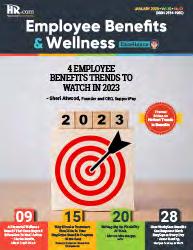

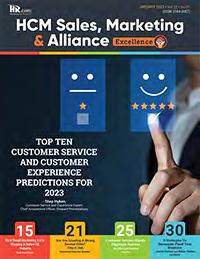


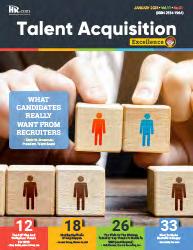



Publications 13 Targeted Publications to Reach Your Audience Informing, Educating, Enlightening and Assisting HR professionals in their personal and professional development, the Excellence series offers high-quality content through the publications! Like to submit an article? Use our online submission form or for more information go to www.hr.com/ExcellencePublications




























































































































































